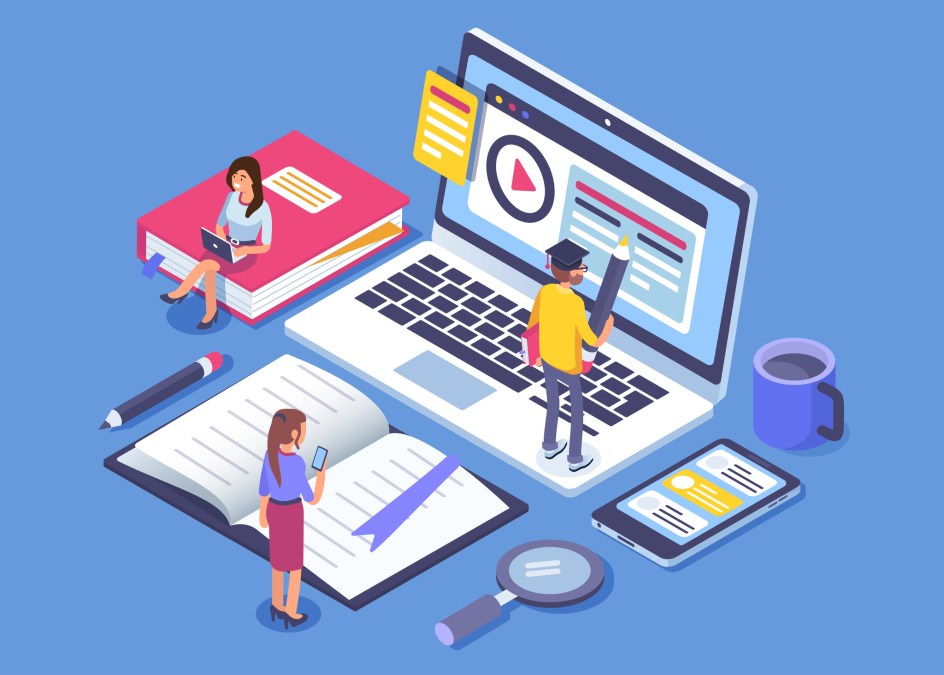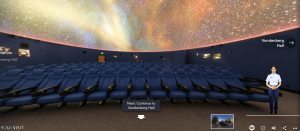For better edtech purchasing, ask these 4 crucial questions

While the Wild West era of edtech may be over, there’s still some mystery over how schools should decide which digital materials to buy. In a recent webinar hosted by edWeb.net, district leaders, developers and researchers answered burning questions about edtech procurement.
1. How do you approach purchasing education technology tools?
Daryl Diamond, the director of innovative learning at Broward County Public Schools in Florida, a system with more than 271,500 students, said when her district identifies a need, her team does an exhaustive competitive analysis. It first uses a request for information — not a request for proposals — to see what products are available. The team looks at how each product would fit with the district’s learning standards and curriculum, but also that the product works within its learning management system. At every step, they involve the developers so the companies understand Broward’s expectations and why the team made its final decision.
Robert Furman, the principal of South Park Elementary Center in Pennsylvania said his small district has fewer funds and personnel, so he can’t justify a long research process when many edtech products become obsolete within two years. Instead, he said he looks at what other schools and districts have already tested or looks at less expensive options, such as apps.
Ayanna Howard, the chief technology officer of the edtech company Zyrobotics, agreed that tools can become outdated quickly, so her company tries to make products that can have a big impact on student learning in a short timeframe. When her company’s employees talk to schools, their focus is on the classroom teachers and getting them to understand the value of each product.
Sierra Noakes, a senior research project manager with Digital Promise, a nonprofit dedicated to spurring innovation in educational environments, recommended schools conduct needs assessments. She said schools often look at the curricular content or internal infrastructure only. Noakes said that the process must also include an “equity assessment” to determine that all students and teachers can access the technology outside of school.
2. What role do learning goals play when searching for the best edtech?
Both Diamond and Furman said this is the most essential element. Teachers don’t want to be force fed technology simply because an administrator thought it was a good idea. In fact, there are many times when a non-digital tool, like traditional flashcards, are better than a digital counterpart because the digital version adds nothing to the learning process, they said.
Howard said that for developers, it’s not about whether the product can address a learning goal, but whether it can address variable learning goals. One strength of edtech is the ability to help teachers provide differentiated lessons, and Howard said the best edtech can be used for students at various stages and across a variety of abilities.
Noakes said she always encourages educators to ask: “How might tech support educators’ ability to differentiate learning in the classroom?” This, she said, allows learning goals to drive the decision.
3. What do you look for to know an edtech tool is high quality?
Diamond said he first looks for interoperability because no one at his district is interested in products that require their own proprietary ecosystems. More importantly, he said, the district looks for vendor partners who will develop and grow with it.
Furman said he looks for third-party reviews, especially from classroom teachers, before he brings any tools to his teachers for testing.
Howard encouraged educators to ask for documented and validated positive learning outcomes with students.
Noakes added that most educators want to see results from a third-party evaluation because they don’t trust research run and validated by the publisher.
4. How do you approach implementing a new edtech tool in schools?
Diamond said her district has a team of personnel to manage a range of edtech initiatives that include integration with their learning management systems and teacher training. Communicating with the end user is key, she said, to understand what’s coming, what the district is required to do, and what training is available. Her district tries to offer training in increments so that the pace works for the teachers, she said.
Furman said once he’s examined a product, he brings in a small team of teachers — typically one from each grade level — to test it. It’s silly, he said, to do a full implementation before knowing if the product works. Once the test team approves, he then has a group of teacher ambassadors train their colleagues and advocate for the new tool.
Howard said her concern is the amount of training educators need with new edtech. She said she thinks the industry is lagging behind in this area. If companies make smartphones that a two-year old can use, then why are edtech developers making their products so complicated, she asked.
Noakes said that in addition to comprehensive training, schools need to adjust their expectations when it comes to new edtech. Most innovative districts have embraced a sense of failure, Noakes said, and teachers feel confident to say this isn’t working and take a deep dive into why it’s not working.
All participants agreed that a good vendor-customer relationship is essential. Developers want to improve their products, so they should be open to learning what is and isn’t working and finding solutions. As a final notes, they cautioned educators to look beyond test scores in evaluating whether a tool is working properly.
“We often hear when folks start to think about equity that they look at the data and then they tell us how one group of students is doing worse than another group. … Many equity advocates are pushing against this deficit-based approach,” Noakes said. “We encourage folks to still look at the data but kind of flip the look so you’re not criticizing students but [asking] how is our system and where is our system failing to set up students for success?”
About the presenters
Dr. Daryl Diamond is the director of innovative learning in Broward County Public Schools. She supervises the district’s instructional technology program, instructional and digital materials adoption and distribution process, library media, gifted and talented students, and the district’s global scholars program. She has served as an intern principal and assistant principal at Sheridan Technical College and High School, assistant director of organizational change management for a district-wide ERP implementation, instructional leader of curriculum for Broward Virtual School, and project manager technology and instruction for the district’s office of information and technology. She has served on the board of the United States Distance Learning Association and has conducted research for the International Association for K–12 Online Learning (iNACOL). She is co-author of the book Digital Solidary in Education (2014).
Dr. Ayanna Howard is Chief Technology Officer (CTO) at Zyrobotics, an educational technology company, and the Linda J. and Mark C. Smith professor at the Georgia Institute of Technology. She received her B.S. in engineering from Brown University, her M.S.E.E. from the University of Southern California, and her Ph.D. in electrical engineering from the University of Southern California. Her artificial intelligence (AI), robotics and assistive technology research has resulted in over 250 peer-reviewed publications and a number of commercialized products, including STEM Storiez, a set of AI-powered gamified e-books for early STEM education. To date, her unique accomplishments have been highlighted through a number of awards and articles, including highlights in USA Today, Upscale, and TIME Magazine, as well as being named a MIT Technology Review top young innovator and recognized as one of the 23 most powerful women engineers in the world by Business Insider. Prior to this, Dr. Howard was a senior robotics researcher at NASA’s Jet Propulsion Laboratory.
Dr. L. Robert Furman is an educator, leader, principal, student, speaker, and published author. As a former teacher and now administrator, Dr. Rob serves in the foreground of everyday education. Currently, Dr. Rob serves as Principal at South Park Elementary Center outside of Pittsburgh, PA, and has truly become a sought-after leader in topics surrounding the field of education today. Dr. Rob is the author of several books including Reading, Technology, and Digital Literacy and the ISTE bestselling title Are You Future Ready. Beyond speaking at venues across the country, Dr. Rob is also a contributing blogger for The Huffington Post as well as the Ed Tech Review. Rob also hosts a well-known YouTube educational video blog called The Seditionists and educational podcast called the Council on the Future of Education. Further, he has received several prestigious awards, such as being named in the National School Board Association’s “20 To Watch” in technology education and a Pittsburgh Tribune Review News Maker of the year.
At Digital Promise, Sierra leads collaborative, research-based projects driven by authentic needs. By co-designing systemic improvements to the edtech marketplace with key stakeholders, such as education leaders and educators, Sierra hopes to infuse research into edtech product design and help educators make edtech decisions based on classroom needs. Prior to joining Digital Promise, Sierra was an educator and the curriculum coordinator for the Brooklyn Autism Center and received her M.Ed. from the Harvard Graduate School of Education.
About the host
Barbara Pape is the communications director for the Learner Variability Project at Digital Promise Global (DPG). She has 20 years’ experience in strategic communications, writing, and policy analysis, primarily in education. Previously, she served as Executive Producer of the award-winning Teaching & Learning conference, sponsored by the National Board for Professional Teaching Standards, where she developed content and oversaw outreach and communications. As a writer, she has written for numerous publications, including Harvard University, the National Education Goals Panel (U.S. Department of Education) and Parents magazine. Barbara also served as editor and publisher of the first electronically delivered education newsletter, the Daily Report Card. She earned an EdM at Harvard University’s Graduate School of Education and launched her career as a middle school language arts teacher.
Join the communities
Research and Evidence in Edtech is a free professional learning community on edWeb.net that brings together researchers, educators, and product developers to share best practices related to edtech research and evaluation.
Personalized Learning for All is a free professional learning community on edWeb.net that brings together researchers, educators, entrepreneurs and product developers to share the latest research findings, best practices, and success stories that are shaping the development of research-based programs and products to address the growth of learning variability in today’s schools.
This edWeb webinar referecend above, sponsored by Digital Promise, can be found here.




